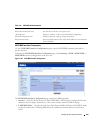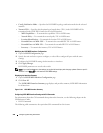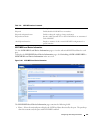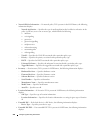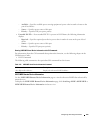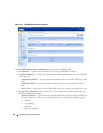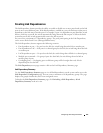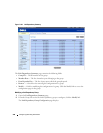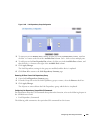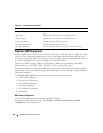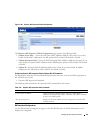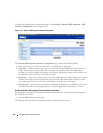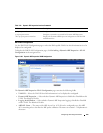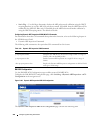
Configuring Switching Information 437
Creating Link Dependencies
The link dependency feature provides the ability to enable or disable one or more ports based on the link
state of one or more different ports. With link dependency enabled on a port, the link state of that port is
dependent on the link state of another port. For example, if port A is dependent on port B and the switch
detects a link loss on port B, the switch automatically brings down the link on port A. When the link is
restored to port B, the switch automatically restores the link to port A.
You can create a maximum of 72 dependency groups. The ports participating in the Link Dependency
can be across all the Stack Units (Manager/Member unit).
The Link Dependency feature supports the following scenarios:
• Port dependent on port — If a port loses the link, the switch brings down the link on another port.
• Port dependent on LAG — If all ports in a channel-group lose the link, the switch brings down the link
on another port.
• LAG dependent on port — If a port loses the link, the switch brings down all links in a channel-group.
• Multiple port command — If a group of ports lose their link, the switch brings down the link on
another group of ports.
• Overlapping ports — Overlapping ports on different groups will be brought down only if both
dependent ports lose the link.
The Link Dependency menu page contains a link to the Link Dependency Summary page.
Link Dependency Summary
Use the Link Dependency Summary page to view all link dependencies on the system and to access the
Link Dependency Configuration page. You can create a maximum of 16 dependency groups. The page
displays the groups whether they have been configured or not.
To display the Link Dependency Summary page, click Switching
→
Link Dependency
→
Link
Dependency Summary in the tree view.



